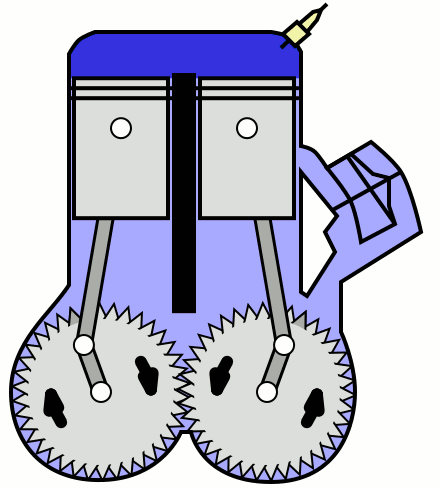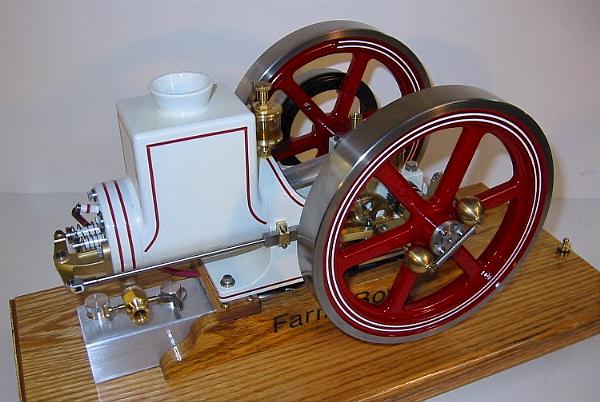The Engine Collection
Two Cycle Engines4 Cycle Hit & Miss
4 Cycle Throttled
Stirling Cycle / Hot-Air Engines
Diesel Engines
Model Engines
Unknown/Special Engines
2 Cycle Engines
Two cycle engines made their first crude debut in the 1880’s and required many additional years to become the basis of today’s 2 cycle design. With the invention and resulting patents for the four cycle design in the late 1860’s, the two cycle design was one method designers used in order to ‘sidestep’ these patents and still produce a usable engine.

4 Cycle ‘Hit and Miss’ Engines
A good majority of the early stationary engines using the 4 cycle design, used a method of speed control which involved the exhaust valve mechanism. Engine speed is sensed, usually, by a fly ball type of governor, similar to those used on early steam engines. As engine speed increases to a preset level, the governor mechanism engages some type of latch mechanism to hold the exhaust valve open, regardless of the exhaust cam position. With the exhaust open, the engine is unable to draw a fresh gas/air charge into the cylinder during the intake stroke, nor is it able to compress the mixture during the compression stroke. Thus, nothing is present to provide power during the following power stroke and the engine simply ‘free wheels’ as long as the engine RPM is up and the governor latch in activated.

- Stover Type KC
- Waterloo “Waterloo Boy”
- Root & Vandervoort
4 Cycle ‘Throttled’ Engines
Stirling Cycle
The Stirling Cycle engine is a very old design dating back to 1816, the brainchild of the Rev. Robert Stirling (1790-1878). The design is simple in its theory, but the mechanics by which this is accomplished can sometimes be a challenge to explain. Suffice it to say that a contained quantity of air in the engines cylinder is repeatedly heated and cooled by being moved from a heat source to a cooling source and back again. Since air expands when heated and contracts when cooled, a usable pressure pulsation in generated which is applied to a piston, connecting rod and eventually a crankshaft in order to produce work. The heating of the air is usually done by a wood, coal or gas stove as part of the engine. Cooling can be accomplished by water as in this example, or by air. The pressures generated by these engines is very low which, compared to steam, makes them very safe, which was the reason why the Rev. Stirling took on the task of engineering such an engine. However, these low pressures translates into a low horse power output, which eventually contributed to the demise of these engines, even though many where built prior to 1900. It is interesting to note that there is a reserging interest in the Stirling cycle theory and many modern engineers are looking, once again, at the Stirlings potential.
- Rider-Ericsson Hot-Air Pumping Engine
Diesel
Models
- 1/2 Scale Olds model engine
- 1/3 Scale Rider-Ericsson Hot-Air engine
- 1/4 Scale Mery Explosive engine
Specials
- Hercules ZXB Flat Head Four
